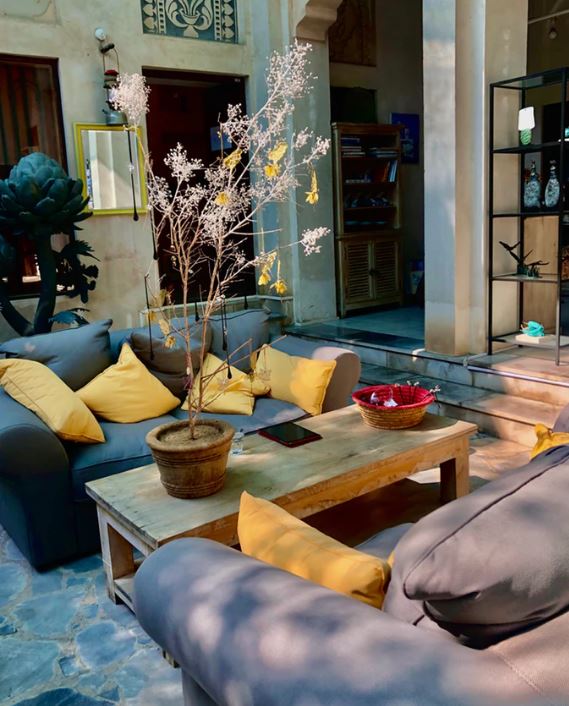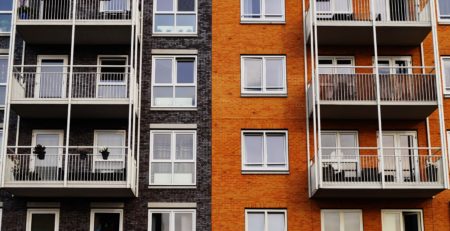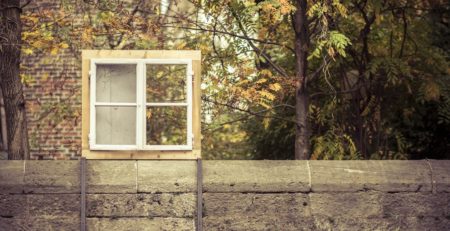Why Invest In Assisted Living Facilities
Alina Trigub2020-12-26T20:43:22+00:00Why Assisted Living Facilities Investing Makes Sense?
You likely heard the phrase, “Ok, Boomer”, correct? This rather condescending phrase was coined by millennials to refer to the aging Baby Boom generation, and if you are like the vast majority of American families, chances are you have a very much loved older relative that needs or will soon need some sort of living care.
The youngest baby boomers begin approaching their 60s; in fact, there are almost 46 million Americans 65 and older, and this population will double by 2045. That means that we all need to adapt to managing the current and the soon-to-be senior population’s health conditions and quality of life.
That’s why various types of senior living facilities are terrific at fulfilling the specific needs or older adults; an adjusted cost of living and a supportive social environment. This in turn translates into a guaranteed stable rental income (senior housing will typically yield higher resident lease income), and you are more likely to have low turnover from seniors (although investors also need to adopt a long-term view, since eventual turnover is unavoidable). Senior living could be a golden opportunity for real estate investors, who are eager to fill the significant demand in the marketplace for seniors that no longer want or can live on their own.
The vast majority of senior Americans would choose to avoid traditional nursing homes,
so let’s explore various senior living facility options.
Assisted senior living facilities are different from skilled nursing homes because assisted living facilities (ALF’s) offer a residential approach with more personal and cost-effective services. Assisted living facilities do this either by employing home health care service agencies or personal care staff. Yet another type of senior living facility is Independent Living or Communal Living, which are co-housing communities that cater exclusively to the 55-plus crowd. People who live in these communities do not need any living assistance at all. These types of facilities could be in a single-family home or a town home, or an apartment complex.
Senior living facilities are regulated in all 50 states, however, since there is no universal definition for these facilities, communities can offer different levels of care. For example, my husband and I recently researched a small-scale Assisted Living set-up (I will lay out the main points specific to this type of senior living below), which are small-scale assisted senior living facilities that provide light care for six to twelve patients in a converted single-family home, while larger facilities provide care for folks who need help eating or are bedridden. Memory Care is considered to be specialized assisted living that is secure to protect residents, and also has staff specially trained to care for those with Alzheimer’s disease and dementia. Normally, early stage dementia residents can easily be cared for among other assisted living residents, and when care for their need’s ramps up, they are transitioned into the memory care area. Many larger-sized assisted living facilities offer dedicated Memory Care programs for residents, which are designed to decrease agitation and improve their quality of life. The bottom line is that the level of care depends on the state’s licensing. Most states have various license tiers, so that assisted living facilities with a higher degree of licensing are able to provide more skilled memory care, such as for patients with Alzheimer’s disease and dementia.
Longer lives are all but guaranteed, and increased longevity will likely spur growth in the senior living real estate sector, which means that the general market outlook for senior living facilities is very encouraging.
So, what does it take to start a senior living facility from scratch? Allow me to share the main points that my husband and I learned about for opportunities specific to investing in small-scale Assisted Living.
First off as you are likely already aware, every effective business starts with a business plan, and this approach is no different than fleshing out a senior living facility. Your business plan will need to detail your facility, and you should be as specific as possible, even outlining emergency procedures. Specifically speaking, your business plan will need to consider regulatory licensing, location, real estate and market assessments, remodeling, resident leases, insurance, equipment, and labor costs.
As a real estate investment, senior living is unique as it also entails running a business with the added regulatory requirements. Registering your senior living home as a business with the state, and filing forms for the proper federal tax identification number will be the easy part. Afterward, you will have to be meticulous in acquiring the additional state permits and licensing. You will be able to get most information from your state government website since licensing for senior living homes is regulated at the state level. You will need to compile information for safety operations, infectious disease control, staff training, audits, and inspections, as well as disclosure and privacy protection. It is a given that state licensing boards will carefully read through your business plan, operations manual, and safety protocol. You should also be ready for periodic inspections by state regulators, and if your senior living facility will accept Medicare or Medicaid, count in oversight from federal regulators, as well.
What type of real estate should you consider for small-scale Assisted Living?
Right off the bat, preferably you already thinking of a single-level ranch as the ideal Residential Assisted Living facility. Simply put, no stairs equal safety for seniors unless they are fully mobile. Multi-story homes are still achievable for the purposes of Assisted Living; however, you would need to consider the potential extra expense of an elevator or a stair lift. Even the basement plays a role in the potential revenue. For example, basements offer office space or game/social activities or storage areas, so that the living areas are not cluttered, but in most cases, basements are not legally structured to contain bedrooms unless they have a wall with an external exit.
The size of the home plays a role as well. Bigger is better because the residents will be more comfortable.
Each resident’s living space should be around 300 square feet, so if your home has 3,000 square feet of living space, you can count on 10 residents to be pretty comfortable. At the same time, if your home is even larger, then your residents will be even more comfortable.
You will also need to do your homework about the demographics in the local area before purchasing or leasing a home for your facility. Consider that your senior living facility should be located in a relatively close distance from the children of the residents. Keep in mind that although many seniors fear that they will be dumped and forgotten, in actuality their family members care and visit often. This attention extends the continuity of the life they had prior to moving to a senior living facility. I know that regular visits from family and friends helped my husband’s grandmother settle in and feel secure. She looked forward to our time together, and visitors her their days more eventful.
Of course, you should also be knowledgeable in the type of staff you will need for your senior living home. Chances are you will probably not need the highly skilled nursing professionals, however, you should still understand the differing health care professional roles, so that you are in a better position to hire correctly qualified staff and show them your proficiency as you interview them. In addition, although you may not need higher trained employees on a regular basis, you may still need them intermittently.
- Personal Care Assistants (PCA) are usually not certified and are responsible for light cleaning, cooking, running errands, and doing laundry, as well as assisting residents with bathing, showering, grooming, and other personal hygiene tasks. They also spend time with residents in activities like reading, talking, and playing games.
- Home Health Aides (HHA) are trained and certified professionals, who support residents with housekeeping and laundry services, shopping for food and other household requirements, preparing and serving meals and snacks, and running errands. HHAs also assist residents by providing personal services, such as, bathing, dressing, and grooming.
- Nursing Assistant or nurse aides provide direct patient care. Duties can include taking vital signs, assisting residents to move about the facility, helping them manage their meal trays and use bathroom facilities, turning bedridden patients, and offering emotional support. Nursing aides typically take a test that requires them to carry out duties such as taking blood pressure, putting on compression stockings, or giving a bed bath.
- Skilled Nurses are graduates of an accredited school of nursing, and are state-licensed Registered Nurse or Licensed Practical Nurse. A skilled nurse uses specialized skills and judgment when delivering care to patients. A skilled nurse implements and evaluates patient care while performing nursing procedures to treat and rehabilitate patients. Such health professionals focus on performing nursing procedures, assisting with the rehabilitation of patients according to the care plan directed by the physician, and observing and recording all pertinent information and reporting to the physician.
The points in my article are to make you aware of out-of-the-box investment opportunities. If you are the type of person that likes to help others, then consider investing in Senior Living. Not only will you make a difference in people’s lives, but you will be able to also diversify your investment portfolio into a reasonably safe area.











